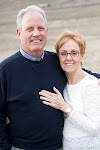Beginning in January, Carlie and I were blessed with the opportunity of serving in the São Paulo, Brazil temple as ordinance workers on a weekly basis from January through August of 2011. With this additional opportunity to serve in the temple, Carlie put forth a tremendous effort to successfully memorize all of the temple ordinances in Portuguese. Both of us had served in the Houston, Texas temple for several years before our mission call, and this new new opportunity brought much joy and happiness to our lives.
In addition to our temple service, I continued to travel weekly to downtown São Paulo Monday through Thursday to offer the Curso de Autossuficiência Profissional (Career Workshop) to those seeking to improve their interviewing skills in hopes of finding employment opportunities. At the same time, Carlie was asked to help perform data entry for the Perpetual Education Fund Program at the Church Headquarters Building located next to the São Paulo temple.
Then, in March 0f 2001, two of our close friends, Elder Dennis Alldredge and his wife, Lavinia Alldredge found it necessary to return home early from their mission due to chronic leg infection Lavinia was experiencing. These health problems had resulted in her spending approximately six weeks of the first three months of 2011 in the hospital. Jointly, they had been called to serve as humanitarian missionaries in all of Brazil and had done a tremendous job in this undertaking. With their departure, Carlie and I were asked to assume the duties for the humanitarian program, in addition to our calling as Employment missionaries. Below are pictures of the Alldredges with whom Carlie and I shared many of our adventures in Brazil.
The Alldedges with Carlie and me in front of one of the chapels in Curitiba where I served as a young missionary in 1966.
Traveling by train to Paranaguá as part of our visit to Curitiba.
Picture of Carlie and Sister Karen Jeppsen visiting with Lavinia in the hospital in São Paulo, shortly before the Alldredges' departure for home.
Both Carlie and I were real excited with the opportunity to be involved with the Humanitarian Program. Here is a little background about this program.
Since the mid 1980s, the generosity of church members made it possible for the Church to reach beyond its members to other disadvantaged groups through organized Humanitarian Services.
Humanitarian Services
São Paulo - 2011
Helping People Help Themselves
This Humanitarian Services Program has as its purpose to improve quality of life by increasing the capacity of local citizens to help themselves. Project categories include Major Initiatives (Clean Water, Neonatal Resuscitation Training, Wheelchairs), Area Initiatives and Emergency Response Programs.
Major Initiatives - Wheelchairs
Our first efforts to immerse ourselves in Humanitarian Services involved the identification of a reputable fabricator of wheelchairs for distribution to the stakes or the Church throughout Brazil. The Church would then purchase the wheelchairs meeting international quality guidelines from the fabricator.
Below are pictures of my visit to Ortobras, a wheelchair fabricator in Caixias do Sul in the state of Rio Grande do Sul. After visiting this fabricator and one other located in São Paulo, we elected to contract with Ortobras for the first 2,000 chairs.
Specifications of each wheelchair (style, size and color) are included on each label
While the donation of the chairs usually would take place at one of the Church's meetinghouses, all such projects involved developing a working relationship with a reputable local "Partner Association" that directly serves people with mobility issues. The delivery of the wheelchairs includes a public ceremony, attended by government officials who acknowledge the needs of the disabled and current efforts to improve mobility and self-reliance.
Before our mission came to an end, we had an opportunity to donate more than 1,000 chairs with plans to donate another 1,000 chairs to the Stae of São Paulo.
222 Chairs donated in Campo Grande, Mato Grosso do Sul
The following pictures are of a donation ceremony held on July 7th, 2011, where Carlie and I represented the Humanitarian Services program in one of our church buildings in Campo Grande, the capitol of the State of Mato Grosso do Sul.
A view from our hotel room of Campo Grande
Headquarters of UNEPE, our "Partner Association" in Campo Grande
Professor Naelson Ferreira, UNEPE's Founder
Above and below are pictures of the donated chairs, some still wrapped in the plastic package.
ABOVE: Carlie and I posing with the President Oliveira of the Cuiabá Mission and several Campo Grande missionaries in front of the Municipality of Campo Grande
BELOW:
Carlie happy to be surrounded by Sisters and Elders serving in the Cuiabá Mission. They had come to witness the Church being recognizd for their humanitarian efforts and the donation of 222 wheelchairs to the physically disabled.
This picture is of the beginning of a line of individuals who will receive new wheelchairs
The Mayor of Campo Grande with several City Councilmen
Professor Naelson Ferreira, expressing gratitude to the Church for the wheelchairs
Major Initiatives - Neonatal Resuscitation Training
Each year the Church of Jesus Christ of Latter-day Saints in conjunction with the Pediatric Society of Brazil a conducts a neonatal resuscitation training program in one of Brazil's 26 states. In June of 2011, 537 doctors, nurses and other pediatric technicians from throughout the State of Pará participated in the 3-day neonatal training program at one of our Church's chapels in Belém, Pará.
While the number of participants was more than double the number expected, last minute efforts by the local members in providing additional meals and making their building available for the attendees made this year's training an overwhelming success.
While Carlie and I were invited to provide assistance in the training, the "real" training was done by the Pediatriic Society under the direction and support of Brother Brent Wilcox, M.D. and his wife, both of whom have served the Church for several years as "Short-term Specialists." Bent had fulfilled a mission to Brazil as a young man. They currently live in Utah Valley and return to Brazil each year as well as undertake similar training programs in Africa for the Church, using their neonatal training skills meant to revive newly delivered infants with breathing difficulties. In addition to the training, the Church donates all the needed neonatal resuscitation equipment to various hospitals and clinics whose staffs receive the training.
The following pictures are a few of many that I took during the 3-day training:
View of Belem, Pará, as we arrive at this large city near the Equator in northern Brazil.
As we arrived at the Chapel in Pará, we discovered that all of the medical equipment we had mailed to Belém, had not yet arrived. So Carlie and I, along with and our boss, Brother Wilson Gomes, had an opportunity to visit with Brother and Sister Wilcox, and to plan how we would be able to accommodate the more than 500 doctors, nurses and technicians who were to arrive the following day.
Dr. and Sister Wilcox and Brother Wilson Gomes
Dr. Wilcox checking on when the equipment will arrive.
Carlie and Sister Wilcox
We elected to disassemble several room partitions we found throughout the building and use each of them as a table top, around which eight to ten individuals could be trained.
Finally, the medical equipment arrives!
The Program began on Tuesday morning with an introduction of the M.D Instructors who would provide the training over the next three days as well as other planned activities by Dr. Rejane, Coordinator of Neonatal Courses in Pará,
After outlining the days activities, the trainees divide up to participate in "hand-on" experimenting with the resuscitation dolls and other medical equipment supplied.
After three days of training, the doctor teachers and Dr. ans Sister Wilcox posed for pictures along with Brother Wilson Gomes.
At the end of the three-day training program, Brother Wilson Gomes (on behalf of the Church) donated all of this year's training equipment (value of more than $50,000) to the Pediatric Society of Brazil, who in turn made gifts of the equipment to the hospitals and clinics needing the equipment.
The scriptures speak of the Saints where it is written, "by their fruits ye shall know them." The Humanitarian Services are surely the fruits spoken of.
Local Initiatives
In addition to the Wheelchairs Program and the Neonatal Resuscitation Program, both Major Initiatives, Carlie and I had an opportunity to be project managers of what is referred to as Local Initiatives, a variety of smaller projects that involve the members of the Stakes and Wards throughout Brazil working in conjunction with Partner Associations, supporting their efforts to promote self-sufficiency. These Local Initiatives are overseen by the Area Presidency in São Paulo, rather than being sent to Salt Lake for approval.
During the eight months that Carlie and I were called as Project Managers for Local Initiatives, we were able to solicit and receive approval for more than 25 such projects. The projects included:
1. Provision of a water well to bring drinking water to the Village of Jua Baixa.
2. Renovation of the Headquarters for the Association of the Blind of Rondônia in Porto Velho.
3. Donation of equipment to a Primary Care Hospital in Curitiba, Paraná. Equipment included 2 wheelchairs, 4 stretchers, 7 blood pressure cuffs, stethoscopes and 7 bath chairs.
4. Donation to the Indian Association of Maringá, Paraná. Donation used to equip two community kitchens and to promote self-sufficiency. Equipment included furniture, a refrigerator, freezer, oven exhaust fans and a blender.
5. Construction of a Bus Shelter to assist with the disembarkation and embarkation of 299 students with learning disabilities at their school.
6. Renovation to the Christ the Redeemer Children's Home, including roof repair, new tile floor, and repainting of the facility. Much of the work was performed by Church members.
Emergency Response Projects
The guiding purpose of the Church's Emergency Response Projects is to relieve suffering following natural and man-made disasters by providing short-term life-sustaining resources to its members and others. Response items include food, water, blankets, clothing, hygiene kits, diapers and medical supplies.
One such disaster occurred in January of 2011. Torrential rains in the State of Rio de Janeiro caused disastrous mudslides on the hilly communities of Nova Friburgo, Petrópolis and Teresópolis resulting in the deaths of 903 persons. Brother and Sister Alldredge were given the opportunity to see first-hand the extent of this natural disaster.
Along with other members of the Church throughout Brazil, we were privileged to participate in donating food, water and clothing to the surviving victims of the disaster. Below are photos documenting the disaster and some of the relief efforts made.
Saying Our Goodbyes to Brazil
With the end of our mission fast approaching, we had but little time to reflect on the many blessings and personal growth we experienced over the past 18 months. Since our return, however, our appreciation and gratitude continues to grow and affect our lives.
Probably what makes the end of a mission most difficult is parting company with wonderful people we learned to deeply love. Since Carlie and I were privileged to serve in a variety of callings and church programs, we rubbed shoulders with many, many wonderful people.
Employment Resource Center
In our calling as Employment Specialists we would take the bus that stopped near our condominium to the Employment Center on Avenida Paulista in downtown São Paulo. There we would present the Career Workshop each week to those students (from about 18 yrs to 45 yrs of age) seeking tools and techniques to prepare them for better employment.
What follows are some of the last classes we taught in 2011:
When students have successful interviews, and are hired, they return to the Employment Resource Center to "ring the bell" announcing their success. This instills positive feelings in the other students.
While it will be difficult to recall the names of the more than 200 students who attended our Career Workshops, I will remember how I felt as I saw them increase in their confidence and their ability to succeed. The Career Workshop is an inspired program.
Mission Training Center (MTC)
Soon after arriving in Brazil, we were also called to serve in the Mission Training Center every Sunday. In March of 2010 I was called as a Counselor to Branch President Van Orman in the 6th Branch, and in April was called as President replacing President Van Orman as he and his wife completed their mission. Together, Carlie and I had wonderful experiences interacting with the 215 Elders and Sisters that comprised the 6th Branch.
90 Elders and 20 Sisters of this total were from Brazil; a addition 88 Elders and 5 Sisters were from the United States. We were also blessed to have the first group of missionaries at the MTC from other South American countries; 7 Elders from Argentina, 2 more from Uruguay and 1 from Paraguay. Additionally, we received 2 Sisters from Mozambique, who were called to serve their missions in the Cape Verde Islands.
Each Sunday I or one of my counselors would alternate in speaking in Sacrament Mtg., along with our spouse. This meant that when we had Brazilian or Spanish-speaking missionaries, Carlie and I delivered our talks in Portuguese. When we had North American missionaries, branch presidencies were asked by the MTC President to prepare our talks and prayers in English.
Carlie with Sister Maria Carmo Ferraz and Sister Sandy Dille
A Saturday afternoon with the Dilles and the Ferrazes
We developed a special bound with those who were called to serve with us in the 6th Branch. Elder Ronald Dent and Brother Ruben Ferraz served as my counselors; After Elder and Sister Thelma Dent completed their mission, Elder Larry Dille replaced him as my 2nd Counselor. Larry and his wife, Sandra, actually lived at the MTC, where they served as Medical Advisors. Larry had served as a missionary in Argentina as a young man where he learned to speak Spanish.; consequently, both he and Sandra had to learn to speak Portuguese in order to fulfill their callings. They performed excellently in everything they did! Ruben Ferraz, and his sweet wife Maria Carmo, are a loving wonderful Brazilian couple. They both speak excellent English and were so kind to invite us to their beautiful home several times. Ruben has a strong and abiding testimony of the gospel and was so helpful to me and to the missionaries assigned to our Branch. We continue to receive e-mails from Ruben and look forward to seeing him and Maria Carmo when they come to the States.
Humanitarian Services
As I mentioned above, Carlie and I had been called to be Welfare Services missionaries, and began our service as Employment Specialists. With the departure of the Alldredges, we also functioned as Project Managers for Humanitarian Services, another division of the Welfare Services Program of the Church. As such, most of our time was spent working in the Church Headquarters building located next to the temple in São Paulo and across the street from where we lived.
The São Paulo 5 Chapel
Looking from the 4th floor of the Church Office Building toward the São Paulo Temple, you can see the Vertentes Condominiums where Carlie and I and many of the senior missionaries and members alike live.
Here are the wonderful people with whom we served in the Humanitarian Services and the Perpetual Education Fund Departments on the 4th floor of the office building:
While my time was spent working under the direction of Elder Paulo Araujo (above) and Brother Wilson Gomes (below) developing humanitarian projects with with the stakes throughout Brazil
Brother Wilson Gomes
Our dear friend, Elder Camargo
Elder Rocha
Our Farewell Banquet with our dear friends!
Just before leaving, we spent an evening at Elder and Sister Scadden's apartment with several other dear couples with whom we served and grew to love as family.
Sister Marie Scadden and Sister Rocha
Carlie and I with Elder Arlen Woffinden and Sister Debi Woffinden
Sister Sue Ann Call, Sister Claudia Andrew and Carlie
Posing with Elder Randy Wilkinson and Sister Cheryl Wilkinson
Our Host, Sister Scadden, Sister and Elder Rocha and Elder Don Andrew
Elder Rich Scadden, Sister Lynette Clark and Elder Larry Clark
Carlie with Sister Lynette Clark
Sister Claudia Andrew and Carlie
Sister Sue Ann Call and Carlie
Elder Rocha and Elder Andrew
Com Saudades Partimos!
Carlie with Sister Lynette Clark
Sister Claudia Andrew and Carlie
Sister Sue Ann Call and Carlie
Elder Rocha and Elder Andrew
Com Saudades Partimos!


































































































































